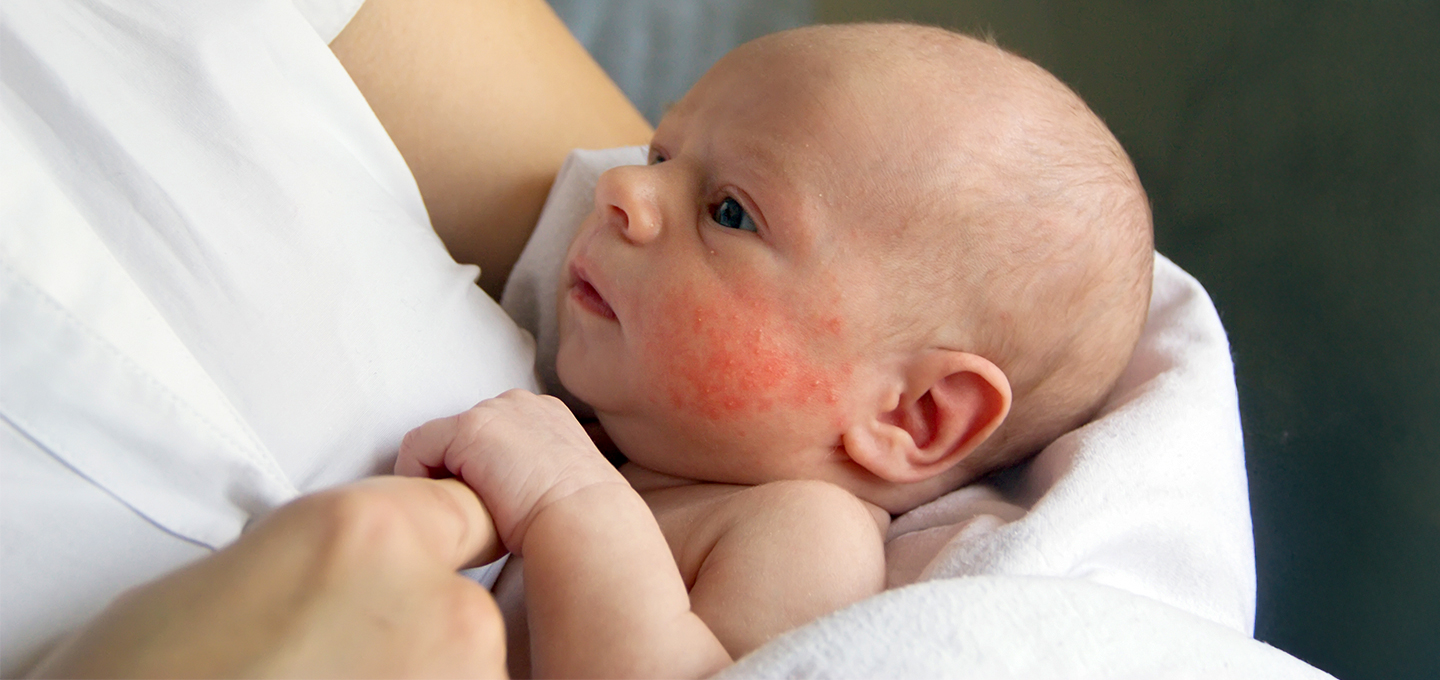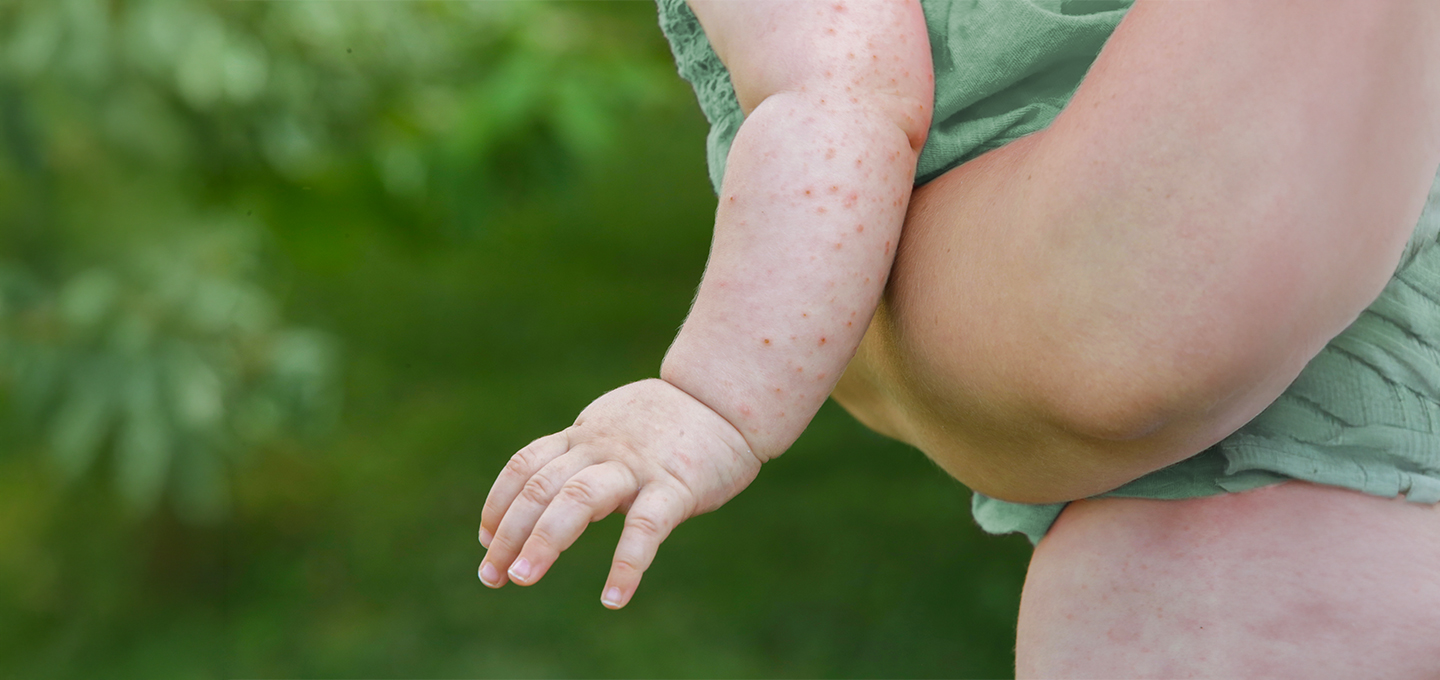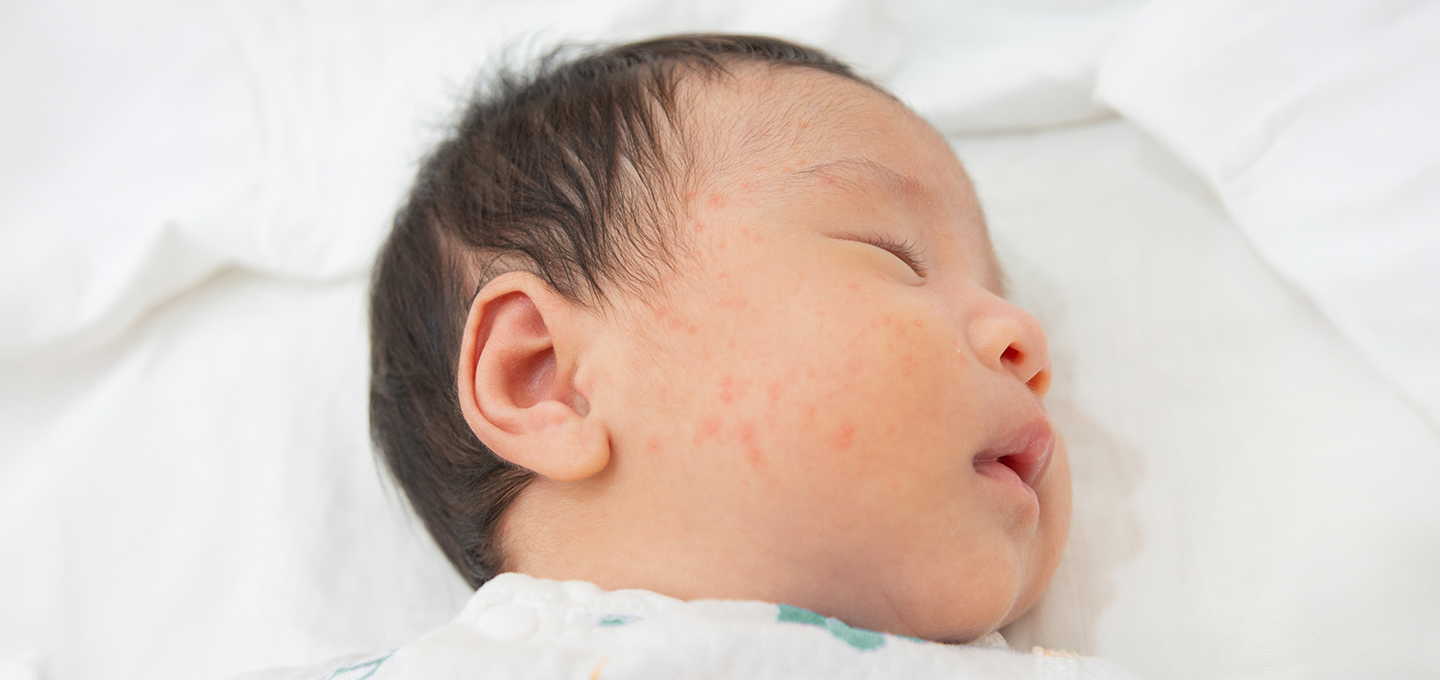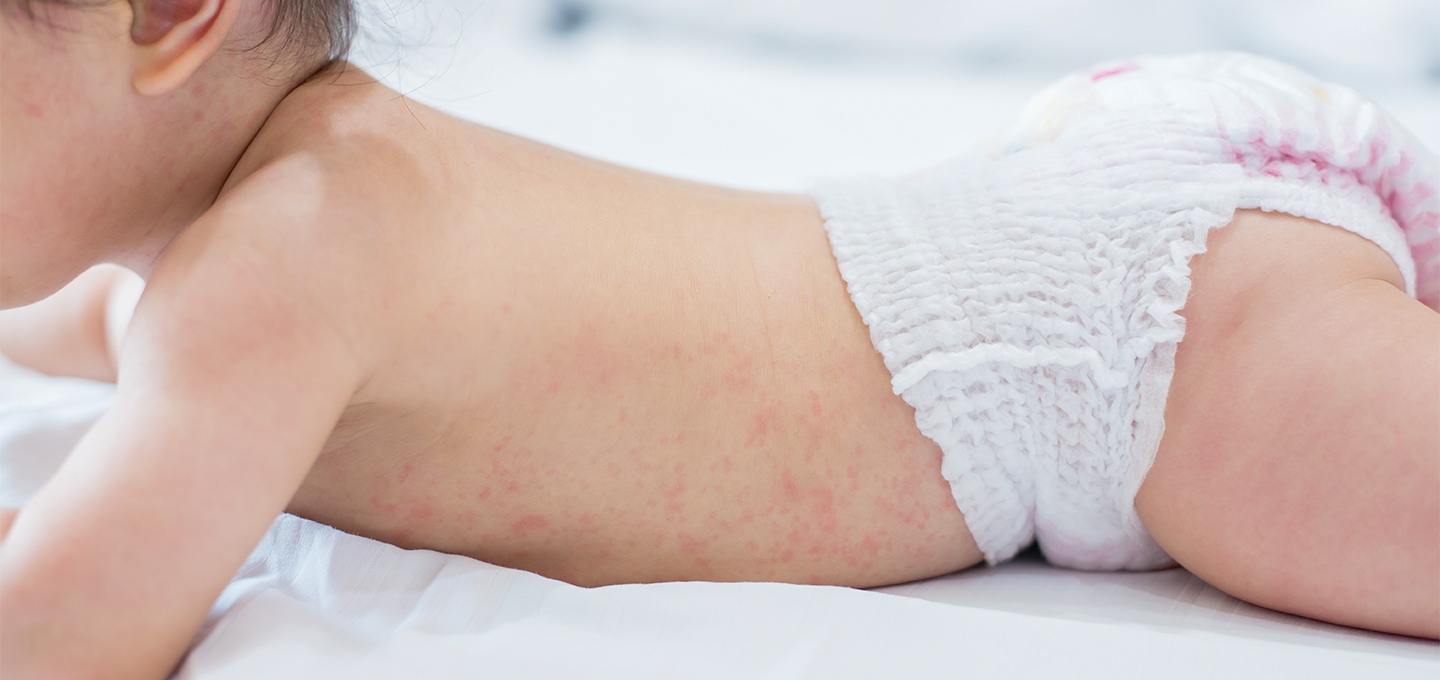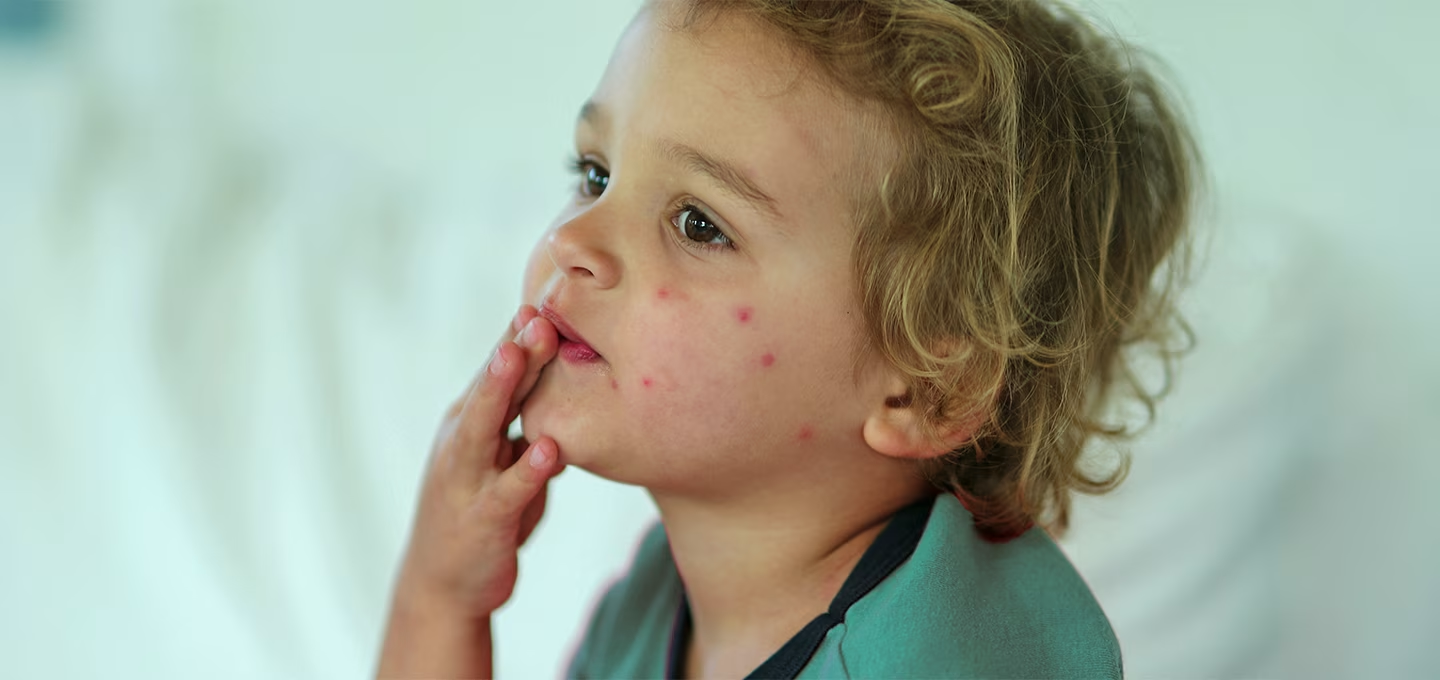
How to Deal With Bedbug Bites on Babies and Older Kids


Key Takeaways
Bedbugs can happen to anyone—and they sure are a nuisance when they do! It takes a lot of work to get rid of the bugs, but then you’re left wondering how to deal with any bedbug bites on your babies, toddlers, or older kids. What do bedbugs look like and what are the signs of a bite? Read on for the answers to those questions and more!
What Are Bedbugs and What Do They Look Like?
Bedbugs are tiny parasitic insects that hang out on your bed and bite you at night. They’re quite small (usually about the size of an apple seed but can be as small as a poppyseed) and typically appear reddish-brown in color.
They like your bed because that’s where you spend a lot of time, and they can easily hide in the cracks and crevices without being detected. And, as nocturnal creatures, they’re more active between 2 a.m. and 5 a.m., which is likely when your baby is sleeping.
How Do Bedbugs Get Into Your Home?
Most commonly, people unknowingly bring bedbugs into their homes after traveling and staying somewhere like a hotel, where there’s a high turnover of guests. Bedbugs aren’t a sign of poor hygiene or a dirty home; rather, bedbugs simply go wherever they can find a host, regardless of the environment.
Unfortunately, these little critters are stealthy and can easily crawl through flooring, cracks, or door frames. If you live in an apartment building, for example, bedbugs could crawl into your apartment from a neighbor’s unit.
Some activities increase the risk of bringing bedbugs home. They include
You might want to keep a first-aid kit on hand when at home and traveling, which could include products to keep the bugs away.
How to Get Rid of Bedbugs and Prevent Bedbug Bites
Preventing bedbug bites all starts with preventing an infestation. Female bedbugs can lay between 200 and 500 eggs in their lifetime, so even if only one bug hitches a ride in your suitcase, you could have a future infestation on your hands. And although bedbugs aren’t known to pose a health risk, frequent bites could lead to skin irritation on your baby’s body or interfere with their sleep. It’s best to tackle the problem ASAP and use some easy how-to tricks to prevent bedbug bites by keeping them out of your home.
For example, if you’re traveling, you can
If you’re shopping, you can
If you live in an apartment complex, you can try to close off your unit. This tactic involves sealing any cracks or small openings inside your home, including baseboards, doorframes, light sockets, etc. Other things you can do inside your home include
If you have an infestation, it’s best to get professional help. These clever creatures have started to resist typical chemicals used to rid them from homes, so you’ll need a savvy expert to help you exterminate bedbugs thoroughly.
What Are the Symptoms of Bedbug Bites?
If you notice small red dots on your baby’s or toddler’s body, you might suspect that you have bedbugs; however, not all bites are from these annoying pests. So, how do bedbug bites look and what are the symptoms? You can identify early-stage bedbug bites on babies and kids by paying attention to the following characteristics:
Some kids will have no reaction to bedbug bites and might not even notice them, whereas other babies and toddlers may find them itchy.
If you’re not convinced that the bites on your baby’s body are from bedbugs, look for other signs that these critters are hanging around your little one’s bed. Bedbugs give off a sweet, musty odor, and you may notice small, rust-colored stains or spots on the bedding.
Can Bedbug Bites Make Babies Sick?
Can bedbugs hurt my baby? You’re not the only parent asking this question! Luckily, bedbugs don’t usually pose a health risk to you or your children, and they aren’t known to cause illness or spread disease, even if they leave bites on vulnerable areas, like your baby’s face. Most likely, your little one will simply have an itchy sensation for a few days, and that’s it.
In rare cases, bedbugs can cause other symptoms, which include hives and a rash if there’s an allergic reaction. If you see these symptoms on your child, contact their healthcare provider. And if you notice signs of a more serious allergic reaction, like anaphylaxis, call 911 or take your baby to the Emergency Room. Serious symptoms include trouble breathing, swollen tongue, high fever, loss of consciousness, etc.
How to Treat Bedbug Bites
If your little one has bedbug bites, it’ll take time for the bites to heal on their own. There’s no magic solution to these bites, but there are some ways to cope with the itching, which is usually the most uncomfortable part. If you’re searching for home remedies for bedbug bites, there are two tactics you can try:
You might to keep any anti-itch creams or lotions that your child’s healthcare provider approves in your baby first-aid kit or medicine cabinet for any future bug bites!
How to treat bedbug bites on a child doesn’t get much more complicated than that! You don’t need to do much, but the best bedbug bite strategy is stopping an infestation from happening in the first place.
FAQS AT A GLANCE
Bedbugs usually bite multiple times, so look for small, red, and raised bumps with a darker middle that form a line or small cluster.
The Bottom Line
Bedbugs are annoying pests that love to bite at night. Luckily, bedbug bites on children of any age, including newborns, babies, toddlers, and older kids, don’t pose a health risk. You can distinguish bedbug bites from other critters' bites (such as mosquito bites) by looking for typical characteristics, which include a line or small cluster of red circles with darker middles.
If you think your little one has bedbug bites, you can simply wash the bites with warm, soapy water and wait for them to go away on their own, which usually takes less than a week. Scratching the bites can lead to an infection, so contact your child’s healthcare provider about using a cream or lotion to help control itching.
Do you keep anti-itch cream or a handy lotion in your diaper bag? Might you be missing any essentials? Take our quiz to find out!
In the end, the best way to prevent bedbug bites on babies and older kids is keeping these bugs out of your home altogether. Follow the guidance in this article, especially when traveling or shopping for clothing and secondhand furniture. Good night, sleep tight, and don’t let those bedbugs bite!
Read more about Baby
Related Articles
Join a World of Support
through Pregnancy and Parenthood.
TRACK WITH TOOLS
LEARN WITH EXPERTS
GET REWARDED

